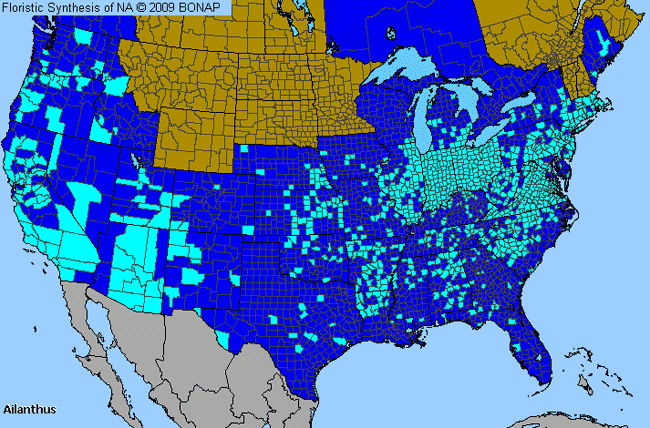Tree-of-Heaven (Ailanthus)

Tree-of-Heaven Genus Details

The leaves of tree of heaven are 12-24 inches long, broadly lance shaped, and covered with fine hairs when young. The tree can grow to 50 feet tall. Bark is light brown and smooth. Flowers are 1/4 inches long, greenish-yellow in color. The fruit is 1 1/2 inches long, showy, reddish-green in color. Tree of heaven is native to China and has naturalized throughout much of the U.S. It is generally planted in urban areas. This tree is said to be the tree in the classic novel A Tree Grows in Brooklyn, by Betty Smith.
Tree-of-Heaven Allergy Info

Ailanthus is a very high pollen producer. This tree has been a moderate source of allergy in the U.S.
Tree-of-Heaven Pollen Description

The tree of heaven has pollen grains that are prolate to subprolate; the amb subtriangular and 3-colporate. The colpi are long and narrow with tapering ends. The sexine is reticulate and the intine is thickened below the apertures.
The grains measure 28-34 x 20-21 micrometers.
Species in This Genus

Allergenicity Legend:
 Mild Allergen |
Mild Allergen |
 Moderate Allergen |
Moderate Allergen |
 Severe Allergen |
Severe Allergen |
 Allergy Test Available
Allergy Test Available
Tree-of-Heaven (Ailanthus) is a genus of the SIMAROUBACEAE family.
This genus includes the following allergenic species:
This genus includes the following allergenic species:












